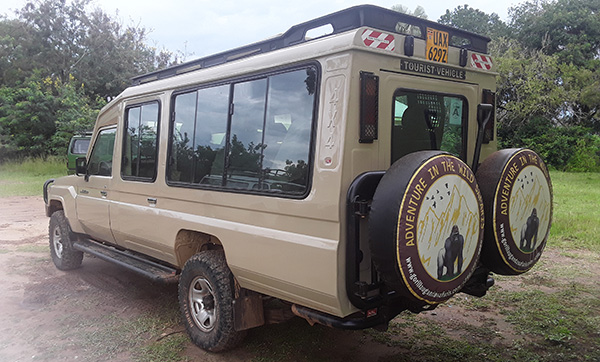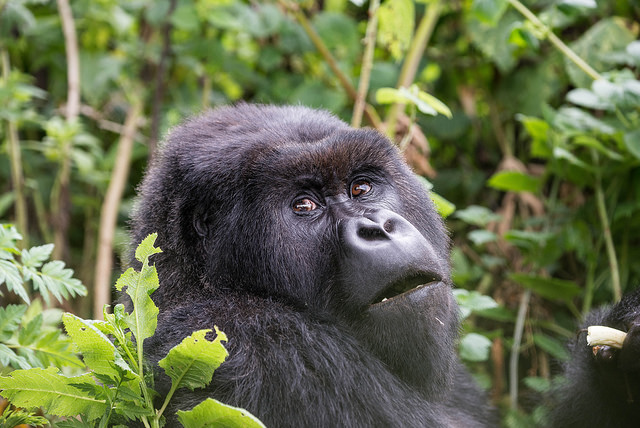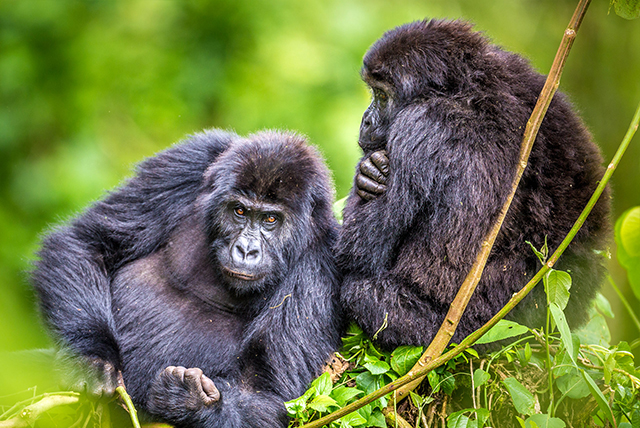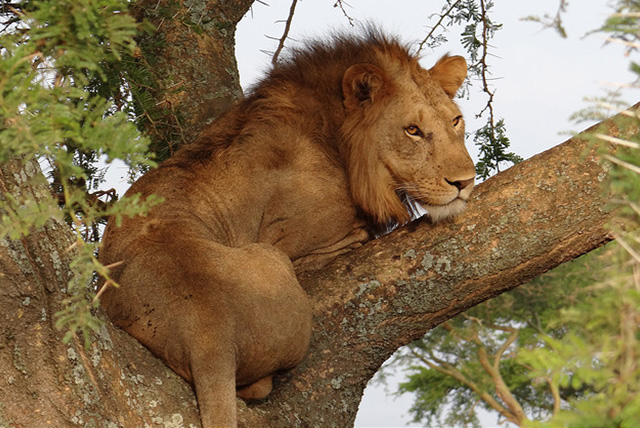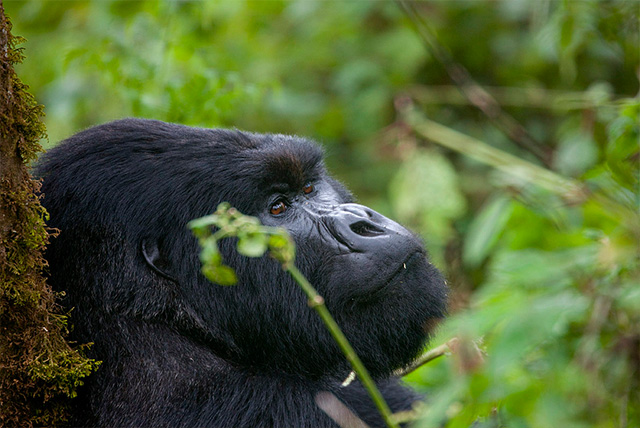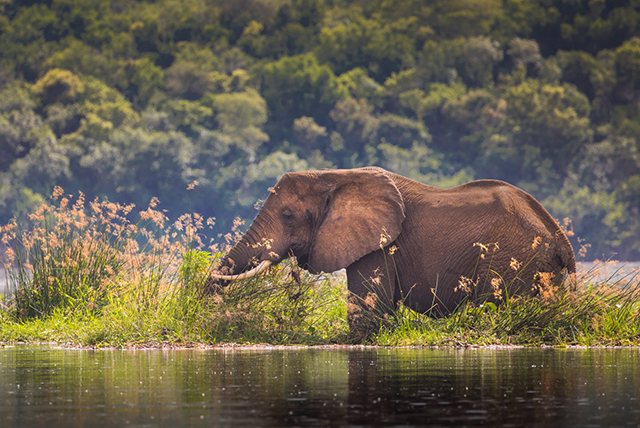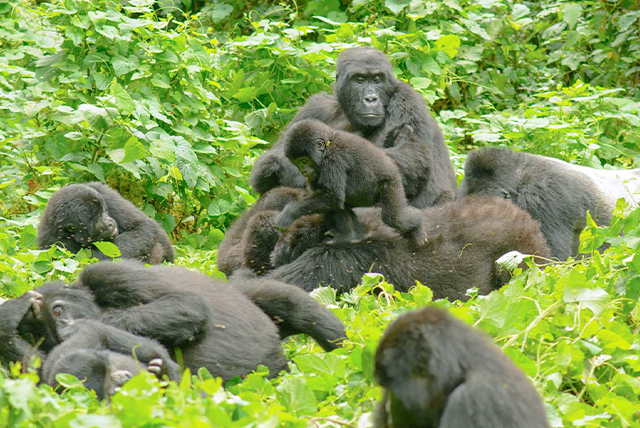Zambia National Parks
Zambia National Parks
Liuwa Plain National Park
This remote park in the far west of Zambia is a breathtaking, unspoiled wilderness waiting to be explored. The plains are alive with excitement and exploration. This is a realm of breathtaking storms, perfect for capturing stunning photographs. The park showcases impressive large herds of wildebeest in November. Here, you can encounter Antelope species, Wild Dog, Lion, Hyena, Jackal, Serval, and Wildcat. Here, you can encounter an abundance of vibrant birdlife. Exploring this area on your own may not be the best idea, as it lacks visitor facilities and roads. It is likely more enjoyable with the expertise of a mobile safari operator.
Best time to visit: August through December.
Sioma Ngwezi National Park
This park is nestled in the southwest corner of Zambia and remains entirely untouched. Recently, there have been no visitors at all. It is enveloped by a Game Management Area, allowing wildlife to wander freely between these two regions without any barriers. This place is alive with the presence of herds of Elephant, Wild Dog, Roan and Sable, Cheetah, and Zebra. While poaching has posed challenges, there are exciting developments on the horizon as plans are underway to transition the Park to private management. There are hardly any roads, and not a single permanent facility in sight. Venturing out on your own is not advisable without the expertise of a guide or mobile safari operator.
Best time to visit: April through December
Kafue National Park
Zambia’s oldest and largest park, the second largest in the world, spans an area comparable to Wales. Once a hidden gem, the Park now boasts a remarkable variety of landscapes, with three majestic rivers weaving their way through its terrain. It is alive with wildlife, showcasing a diverse array of antelope species like Hartebeest, Zebra, Buffalo, and Red Lechwe, along with the Sitatunga.
Joining the ranks of fierce hunters are Lions, Leopards, Cheetahs, and a variety of smaller carnivores. Numerous Hippo herds thrive in the vibrant river habitat. This is a paradise for bird enthusiasts. The Kafue and Lunga Rivers offer thrilling fishing opportunities, alongside the expansive Itezhi Tezhi Dam, a 370 square km paradise for anglers.
The ideal time for game viewing is from April to October, with October experiencing the highest temperatures. After the rains, the scenery is nothing short of breathtaking.
Blue Lagoon National Park is a place where excitement awaits at every turn.
Located on the Kafue flats, this Park is a hidden gem, breathtaking in its beauty; the expansive plains transform from arid grasslands during the dry season to a mesmerizing aquatic paradise in the wet season. It has just been unveiled for everyone to explore. Incredible birdlife awaits, featuring a variety of migratory species. The Park features Acacia woodland along its edges.
Here, you can witness magnificent herds of Kafue Lechwe, along with smaller groups of Zebra, Buffalo, Eland, Roan, Hartebeest, Wildebeest, Oribi, and Sitatunga, not to mention a plethora of waterbirds. Massive river pythons are drawn to the Lechwe and various birds. The Park features expansive, level terrains that stand in stark contrast to the more varied topographies of other parks. It is just a stone’s throw away from Lusaka.
The ideal time for a swift escape from Lusaka is during the rainy season, from November to April, when birdwatchers can truly immerse themselves in the experience.
Lochinvar National Park is a place brimming with excitement and exploration.
Situated on the southern edge of the Kafue Flats, which is a floodplain of the Kafue River, Lochinvar is a stunningly beautiful, compact park featuring wetlands and exceptional birdwatching opportunities, boasting 428 species—truly remarkable for such a small area, averaging nearly one type of bird per kilometre. A compact national park, spanning just over 410 square kilometers, Lochinvar is nestled north of Monze, 235 kilometers (146.03 miles) from Lusaka, on the southern edge of the Kafue Flats in the Southern Province. The National Park features three unique zones: the northern floodplain, which is part of the Kafue Flats, the expansive central grasslands, and the lush southern woodlands.
While larger mammals may be scarce in this area, the Blue Wildebeest, Buffalo, Kudu, Oribi, and countless Kafue Lechwe thrive in the waterlogged surroundings. In the southern part of the Park, explorers will discover enchanting woodlands and rejuvenating hot springs at Gwisho, a site steeped in ancient history as one of the oldest archaeological treasures in Central Africa. Strolling through the park is allowed.
When to go: The dry season offers the best opportunities for game viewing, but the Park remains accessible throughout the year, though caution is advised after heavy rains. For birding enthusiasts, the rainy season is ideal.
Mosi-O-Tunya National Park
This park is located along the upper Zambezi and features the breathtaking Victoria Falls. It is quite petite and features a charming circular drive by the river that lasts a couple of hours, where you can spot various animals along the way. This Park is a haven for wildlife, where animals roam freely and at ease, creating perfect opportunities for close-up game viewing and photography. Among the fascinating creatures are various species of antelope, along with zebras and giraffes. Elephants can be encountered as well.
When to go: A sought-after destination throughout the year due to the stunning Victoria Falls and a wealth of thrilling activities. The falls reach their peak magnificence from April to May following the rains, though the mist is thick, making it challenging to appreciate the entire expanse of the falls. To truly enjoy the gorges and stunning rock formations, visiting at the end of the dry season from October to December is ideal.
Lower Zambezi National Park is a place brimming with excitement and exploration.
This is Zambia’s newest park; it remains largely untouched, offering an incredible wilderness experience. The Zambezi channels offer exceptional opportunities for observing wildlife. The Park stretches across the river from the Mana Pools Reserve in Zimbabwe, creating an expansive wildlife sanctuary that invites exploration. Most game can be discovered on the valley floor. This area is home to large herds of elephants, along with buffalo, lions, and leopards. Discover amazing birdlife along the river banks.
When to go: The season runs from April to November, with June to September offering the most excitement, while the angling season peaks in September and October.
South Luangwa National Park is a vibrant haven where abundant wildlife gathers around the picturesque Luangwa River and its enchanting oxbow lagoons. This place is teeming with an exciting array of wildlife and birds waiting to be discovered. This area is ideal for Walking Safaris, which have truly become a highlight here. This park is a vibrant habitat for a variety of wildlife, including elephants, buffalo, hippos, zebras, giraffes, and 14 species of antelope, as well as hyenas, leopards, and lions.
When to go: Experience a variety of seasons, all while enjoying the dry climate. From April to October, October stands out as the peak month, brimming with excitement and opportunities for exploration. Vibrant hues transform the scenery during the rainy season.
North Luangwa National Park is a place brimming with excitement and exploration.
This is a secluded and untamed park with minimal roads, offering an authentic wilderness experience; guests are unlikely to encounter other explorers. Access is restricted and available solely to designated operators for walking purposes only. Some rivers meander through the Park to join the Luangwa, one of which is the Mwaleshi, gently flowing its crystal-clear mountain water down the escarpment. As the dry season approaches, it recedes, leaving behind numerous pools that attract wildlife from the surrounding bush. The landscape boasts a rich tapestry of vegetation, ranging from lush riverine forests to expansive woodlands, vibrant grasslands, and dense acacia thickets. The Park is home to large groups of Buffalo, Lion, Elephant, Leopard, Wildebeest, and Hyena.
The ideal time to visit is from June to October, as the wet season makes it quite challenging.
Nyika Plateau National Park is a place brimming with excitement and exploration.
At the eastern edge of Zambia, this park sits right on the Malawian border, serving as an extension of the National Park found on that side. Nyika boasts a stunning montane highland region. The vistas from 2,000 metres above sea level are absolutely breathtaking. It enjoys a delightful warm climate, a refreshing change from the sweltering heat of the valley.
Landscapes are alive with expansive, undulating grasslands, deep valleys, vibrant protea bushes, slopes adorned with wildflowers, and lush green hills. There are also rugged cliffs and lush, vibrant forests. Stunning vistas and strolling through this area is a delight, particularly with the vibrant wildflowers that bloom in October and November.
The Chisanga Falls can be found within the Park, inviting exploration and discovery. It is a paradise for those who seek the thrill of observing birds in their natural habitat. The wildlife in this area features an array of fascinating creatures such as Zebras, Roans, Elands, and Reedbucks, along with Leopards and a variety of nocturnal animals that can be spotted during night drives.
When to go: Any time of the year offers something special, but the dry season is ideal for spotting wildlife, and the stunning wildflowers bloom beautifully after the rains from November to March. Even in summer, the nights can turn quite brisk, with winter stretching from June to August.
Bangweulu Floodplains National Park is a place brimming with excitement and exploration.
The lake captivates with its stunning beauty and thriving lakeside community, nestled alongside the wetlands—a protected area—within a gentle dip of the North Zambian Plateau. Seventeen rivers converge into the basin, while only one, the Luapula, carries the waters away. The upper areas of the Park are adorned with lush woodlands and vibrant grasslands, while the expansive floodplain showcases diverse grasslands that shift with the rhythm of annual flooding.
This is a land of untamed exploration. The woodland and grasslands teem with a rich variety of game and birdlife. Here, you can encounter the Shoebill Stork along with other rather uncommon birds. The Black Lechwe thrives in the expansive floodplains, while the elusive Sitatunga gracefully navigates the lush reed beds. Other animals like elephants and buffalo appear only after the waters have subsided. Every journey through the swamps unfolds on the water.
When to go: During the rainy season from November to March, the birdlife is incredible, though you will encounter plenty of insects as well. The floodplain typically begins to dry out as late April approaches. As June and July approach, the pathways to the swampland and its captivating floating mats of vegetation become more accessible. August brings a chill in the air, where the days are pleasantly mild, yet the nights are wrapped in a crisp coldness.
Kasanka National Park
Kasanka National Park lies to the north of Lusaka, about a 6-hour drive away, right at the edge of the expansive wetlands of Lake Bangweulu. It is one of Zambia’s smallest parks, yet it boasts a captivating array of rivers, lakes, wetlands, lagoons, forests, meadows, and grasslands. There is a diverse array of wildlife, including animals, birds, and fish. While it may not be famous for its abundant wildlife, it captivates with its stunning landscapes and the presence of unique and elusive birds and creatures.
Kasanka National Park stands out as one of the few privately managed national parks in Zambia. Thoughtful measures have been implemented to protect the untamed surroundings, with funds from visitors supporting conservation efforts and community initiatives.
The park boasts an impressive array of mammals and birds, featuring Elephants, Hippos, various Antelope species, Warthogs, Bushpigs, Baboons, Leopards, and the elusive Blue Monkey that can be found in the forests. Additionally, the rare Shoebill Stork has been sighted in the wetlands of Kasanka. With a stunning array of 8 lakes and 4 rivers, the largest of which is the Luwonbwa, this place is a paradise for anglers seeking thrilling experiences.
Best time to visit: Open throughout the year, offering thrilling game sightings during the dry season and excellent birdwatching opportunities from November to March in the wet season.
Sumbu National Park
Nestled at the northernmost edge of Zambia, along the stunning shores of Lake Tanganyika, Sumbu boasts 100km (62 miles) of some of the most untouched and beautiful coastlines of this vast lake. The lake offers fantastic fishing opportunities and thrilling scuba diving experiences. Incredible vistas and sun-kissed shores, towering cliffs, hidden coves, and serene bays surrounded by lush valleys and rugged hills.
The Lufubu River winds through the Park, flanked by towering 300 metre escarpments that create a dramatic valley landscape. In the northwestern boundaries of this Park, you will find expansive Game Management Areas, creating an interconnected web of safeguarded regions. The Park has faced challenges with wildlife numbers in the past, but they are on the path to recovery. While sightings can be unpredictable, the Park is home to a variety of incredible wildlife, including Buffalo, Elephant, Lion, Leopard, Zebra, and Spotted Hyena, among others. Hippos come alive under the cover of darkness. The area is alive with a vibrant array of birdlife, including the striking presence of migrant species like the flamingo. There are some sacred areas cloaked in enigma that hold great significance for the local Tabwa people.
The ideal time to visit is during the pleasantly warm months throughout the year, with the highest temperatures occurring in September and October. Expect cooler evenings and mornings from May to August. Exploring the wonders of wildlife is most exhilarating during the dry season.
Additional Lesser-Known Parks in Zambia
Luambe is a place brimming with excitement and exploration. Nestled between the north and south Luangwa Parks on the eastern bank of the Luangwa River, this stunning area boasts a thriving population of wildlife and birds.
Lavushi Mandla: Once a vibrant wildlife haven, it now faces challenges from poaching, with Tsetse flies prevalent in the area. Completely untouched by development. Situated in the Mpika area Isangano: Lacking infrastructure and burdened by a troubling past of poaching, it can be accessed by veering west off the Mpika / Mpulungu road, at Chambeshi.
Mweru Wantipa: In the distant north around Lake Mweru, it resembles the enchanting Bangweulu swamps. There are scarce animals remaining and absolutely no development. Lukusuzi: Nestled on the eastern escarpment between North and South Luangwa Parks, this area remains untouched, with game numbers yet to be assessed.
Why Go on a Safari in Zambia?
Amazing Game Viewing, Exciting Adventures, and Walking Safaris
There are a hundred or more reasons to travel to Zambia. Examples that come to mind include ziplining across Africa’s largest waterfall, white water rafting down the powerful Zambezi River, getting up close and personal with game while walking, and staying in some of the most opulent Zambian lodges and camps on the continent.
Though you won’t be roughing it, traveling to Zambia puts you in a prime location to see some of the most untamed and isolated places in Southern Africa. Zambia safaris provide top-notch big game viewing, opulent lodging, and some of Africa’s top guides. Even though safari enthusiasts have long favored Zambia’s vast reserves due to their unadulterated beauty, they don’t draw the same crowds as the more well-known African parks; in fact, the only busy place you’re likely to find is at the stunning Victoria Falls, the nation’s most visited destination.
Despite the fact that the majority of Zambia’s reserves are quite isolated, the capital city of Lusaka is fortunately well linked. Enjoy a beach vacation on the lakeshore in neighboring Malawi to cap off your safari in Zambia, or choose Kenya or Tanzania for more big game viewing. However, before you begin organizing your vacation, consider our top picks for “why should I visit Zambia?”
1. Take Part in Exciting Adventures to See the Magnificent Victoria Falls
One of the main reasons tourists travel to Zambia for safari is to take a Victoria Falls tour. Every year, thousands of tourists go from all over the world to witness this natural beauty in person. The country in Southern Africa is home to half of the continent’s greatest waterfalls.
With so much to offer, the Zambian side of the Falls is quickly emerging as a popular tourism destination in Southern Africa. Its abundance of luxurious lodges and hotels situated directly on the banks of the Zambezi River, just upstream from the falls, is one of its many wonderful features.
Additionally, Zambia offers two incredible experiences that are exclusive to the country’s side of the Victoria Falls. During high water season, the first is a walk down the paved walkways on the waterfall’s edge to cross the heart-pounding Knife-Edge Bridge. This is an exciting (and soaking!) trek along the edge of the precipice, approximately 100 meters (328 feet) above the canyon. A guided tour of Devil’s Pool, a naturally occurring rock pool on the waterfall’s edge, is the second option. Swim to the Devil’s Armchair, a low rocky ledge that keeps you from falling over the edge, and enjoy the breathtaking panorama if you’re feeling adventurous. Don’t worry, it’s completely safe!
Highlights: • See the waterfall up close and breathe; • Swim in Devil’s Pool during low water; • Take part in exhilarating adventure sports like bungee jumping, ziplining, white water rafting, gorge swinging, and more; • Tour Livingstone Island when water levels allow; • Stay in opulent riverfront lodges on the banks of the Zambezi River; • Take game drives in the neighboring Mosi-oa-Tunya National Park.
2. Magnificent Game Viewing at the Walking Safari’s Birthplace
Compared to conventional game drives, walking safaris provide different viewpoints and distinctive experiences. They arouse your senses and transport you to the African environment in a way that is unimaginable from the inside of a car. With a walking safari, you can immerse yourself in the surroundings and get up close and personal with wildlife and nature at a leisurely pace.
And where better to experience this unique trip than South Luangwa, the cradle of the walking safari? South Luangwa National Park, Zambia’s top wildlife attraction, is untamed, isolated, and teeming with a wide range of large game. This genuine, off-the-beaten-path safari adventure takes you on a guided trek through big game habitat as you explore this stunning region on foot. In South Luangwa, a walking safari can range from a morning walk to hiking for many days, with evenings spent under the stars at secluded lodges or tented camps.
Highlights include: • Staying in opulent camps and lodges on the banks of the Luangwa River; • Seeing big game up close, including elephants, hippopotamuses, buffalo, and lions; • Taking part in one of the best walking safari experiences in Zambia’s top wildlife destination; • Being under the watchful eye of knowledgeable guides who were raised nearby.
3. Take Part in a Range of Water Activities to Savor the Powerful Zambezi River
Seeing the magnificent Zambezi River in all of its splendor is one of the main attractions of traveling to Zambia. For those who love water-based sports, a safari on the Zambezi River offers a little piece of heaven upstream from Victoria Falls and forming the border between Zambia and Zimbabwe.
You can engage in a range of activities while lodging at one of the numerous remote lodges and campers scattered along the river’s banks. A popular activity for thrill-seekers who wish to brave the Zambezi’s rapids is white water rafting. A fantastic substitute for game drives, boat safaris allow you to get up close and personal with more aquatic species, such as hippos, Nile crocodiles, and even elephants that venture into the water to cool off. For those who wish to cross the Upper Zambezi yellowfish or the coveted tiger fish off their bucket list, catch-and-release fishing excursions are offered. A guided canoe excursion along the Zambezi is a great way for avid canoeists to come up close to animals and learn the true meaning of big game. The ideal way to cap off your day is with a sunset boat tour, which is a classic Zambezi experience that allows you to take in a calm river cruise while enjoying delectable sundowner cocktails.
Highlights:
Luxurious, remote resorts and camps along the Zambezi River’s banks; catch-and-release fishing for more than 75 fish species
• Exciting white water rafting options • Boat and canoe safari experiences
4. See Zambia’s Greatest Bat Migration in Africa
The Great Wildebeest Migration occurs in Tanzania and Kenya, the zebra migration occurs in Botswana, and the largest bat migration on the continent occurs in Zambia. Every year between October and December, some 8 million straw-colored fruit bats travel from the Congo to Kasanka National Park to hunt the wild Masuku fruits.
This natural occurrence is the largest animal migration in the globe in addition to being the largest bat migration in Africa. Few people have had the opportunity to witness the yearly Kasanka bat migration in person, making it one of nature’s best-kept secrets.
The second-largest wildebeest migration in Africa and a robust lion population can be found in Zambia’s Liuwa Plain National Park. Put differently, it’s the Masai Mara, but with fewer animals and even fewer people.
Highlights: • Witness the world’s greatest animal migration; • Home to Africa’s largest bat and second-largest wildebeest migrations; • Unusual wildlife encounters in lesser-known Zambian areas
5. Incredible Opportunities to See Wildlife in 20 National Parks
There are twenty national parks and thirty-four game management areas in Zambia. Some of the world’s best national parks include Kafue, Lower Zambezi, and South Luangwa. However, choosing a park to visit is more difficult than it may seem because each one offers a different safari experience: Take a guided walking safari through the South Luangwa, which is known for its abundance of wildlife; take a canoe safari in the stunning Lower Zambezi, where you can paddle along the river while dodging crocodiles and yawning hippos; or take part in game drives and horseback safaris in the wild Kafue National Park, which is home to large herds of antelope and plenty of predators. For a full Zambia safari experience, we strongly advise combining two or three separate locations.
Highlights include: • Visiting some of the world’s top national parks; • Staying at opulent lodges and genuine safari camps in isolated areas; • Amazing game watching, including the Big 5, big cats, and well-known species; • Each national park offers distinctive experiences that appeal to all kinds of tourists.

